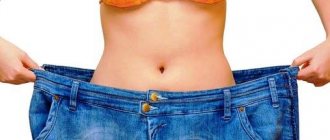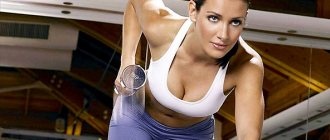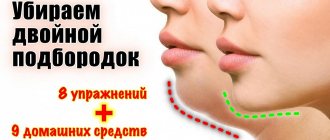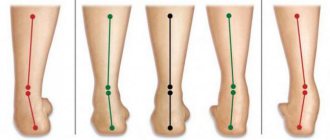Properties and types of muscle tissue
Morphological characteristics:
- Elongated shape of myocytes;
- myofibrils and myofilaments are located longitudinally;
- mitochondria are located near the contractile elements;
- polysaccharides, lipids and myoglobin are present.
Properties of muscle tissue:
- Contractility;
- excitability;
- conductivity;
- extensibility;
- elasticity.
The following types of muscle tissue are distinguished depending on their morphofunctional characteristics:
- Striated: skeletal, cardiac.
- Smooth.
Histogenetic classification divides muscle tissue into five types depending on the embryonic source:
- Mesenchymal - desmal rudiment;
- epidermal - skin ectoderm;
- neural - neural plate;
- coelomic - splanchnotomes;
- somatic - myotome.
Of the 1-3 types, smooth muscle tissues develop, 4, 5 give rise to striated muscles.
Structure and functions of smooth muscle tissue
Consists of individual small spindle-shaped cells. These cells have one nucleus and thin myofibrils that extend from one end of the cell to the other. Smooth muscle cells are united into bundles consisting of 10-12 cells. This association occurs due to the peculiarities of the innervation of smooth muscles and facilitates the passage of a nerve impulse to the entire group of smooth muscle cells. Smooth muscle tissue contracts rhythmically, slowly and over a long period of time, and is capable of developing great strength without significant energy expenditure and without fatigue.
In lower multicellular animals, all muscles consist of smooth muscle tissue, while in vertebrates it is part of the internal organs (except the heart).
Contractions of these muscles do not depend on the will of a person, that is, they occur involuntarily.
Functions of smooth muscle tissue:
- Maintaining stable pressure in hollow organs;
- regulation of blood pressure levels;
- peristalsis of the digestive tract, movement of contents along it;
- emptying the bladder.
The main principle of building muscle mass, which is always forgotten
The main principle of building muscle mass, which is always forgotten...
Attention! An article for barbell lovers without pharmacological help.
I have long been accustomed to the fact that 90% of people do not understand me. However, limiting your audience to the remaining 10% allows you to truly enjoy great communication. It is for people who know how to think logically that I present the following material. I'll still simplify it a little, trying to avoid super-abstruse terms. Perhaps this is how it will arouse interest among more thinking individuals.
So, let's move on to the age-old topic, the most neglected in the fitness industry: building muscle mass.
At the moment, the following model is accepted: training + nutrition + sleep = success. But the main parameter is missing here. I'll tell you about it later...
How should you train? So that the meat grows. To do this, you need to clearly understand the principles of training influence. Muscles do not consist of air, but of already sufficiently studied structures: myofibrils and sarcoplasm. That is why all the theories around myofibrillar and sarcoplasmic hypertrophy are multiplying. Myofibrils are a contractile component of muscle fiber, namely a protein structure. Sarcoplasm is a broth in which myofibrils float, and in order for myofibrils to actively contract, the broth must contain fuel reserves - ATP, creatine phosphate, glycogen, fats. There is no eternal question here - chicken or egg? The main muscle growth is always caused by myofibrillar hypertrophy, and only then does the broth become richer. Therefore, the theory of dominance of sarcoplasmic hypertrophy is a deep misconception when it comes to building meat in strength sports.
- Myofibrils are organelles of striated muscle cells that ensure their contraction. Serve to contract muscle fibers.
- Sarcoplasm is the cytoplasm of smooth muscle cells, striated and cardiac muscle fibers.
- Catabolism is the process of metabolic breakdown, decomposition into simpler substances.
- ATP is a universal source of energy for all biochemical processes occurring in living systems.
- Creatine phosphate is a compound that is found primarily in excitable tissues (muscle and nervous tissue) and its biological function is to maintain a constant concentration of ATP in them.
- Glycogen is the main animal storage carbohydrate and is the main form of glucose storage in animal cells. Deposited in the form of granules in the cytoplasm in many types of cells (mainly liver and muscles).
Everyone knows the expression: “what doesn’t kill us makes us stronger.” This suggests that the training should be hard, with a clear traumatic effect at the myofibril level. It is important to understand here that multi-hour (multi-set) training cannot be hard, it can only be exhausting, that is, depleting sarcoplasm. But our goals are different, as you remember. We need to strike the myofibrils! The secret is simple - heavy weights, not too many reps per set and not many sets.
Let's assume that during training you achieved the desired effect and tore maximum myofibrils. How can I check this? Easily. If on the second, third, even fourth or fifth day after training, muscle pain is very noticeable, then you have hit the target. What's next?
Next we connect the brain. The stronger the pain in muscle tissue, the stronger the effect of injury. The peak of pain occurs at the maximum breakdown of muscle tissue, that is, immersion in a catabolic hole. By loading a muscle group that is suffering from pain, you are unlikely to be able to repeat the success of your previous workout. This is understandable. You're a lot worse off now than you were before the days of the iron game. When will an impact that didn't kill you allow you to become stronger? At least after a few more days. But... in fact, even more time is needed...
More and more often, figures are popping up in science that crazy iron fans don’t really like to talk about. Completing the restoration of myofibrils after a powerful traumatic workout, as well as the addition of muscle tissue above the pre-workout level (that same gain of new meat) can take from 10 to 14 days or more! Why doesn't almost anyone think about this? Everyone wants to achieve results faster. Crazy people train quite often, ignoring the body's cues. But in fact, this only leads to the eternal trampling in the swamp of under-recovery, overtraining and stagnation.
In search of muscle tissue growth accelerators, amateurs go to great lengths - sleep until lunch, eat double portions, buy the entire range of sports nutrition, etc. Undoubtedly, good sleep, good nutrition, and a couple of bright cans of sports nutrition can play an important role in bodybuilding business. Don’t forget about your daily routine, but just don’t take it to the point of absurdity by denying the girl a dose of pleasure.
And now the finale!
Let’s assume that you train competently (I believe 10% in this), sleep enough, eat well, and have a well-established daily routine. Well, what else do you need, you ask? After all, everything is already perfect in this system on the way to mountains of muscles.
Now I'll ask you something. Are you able to achieve the traumatic effect of myofibril rupture during training? If yes, how many days do your muscles hurt? If not, then first learn to train properly. Why am I pulling this whole information cart? Moreover, you must realize the main principle that everyone forgets...
In the most ideal training conditions, with excellent restoration by nature, the inherent rates of muscle growth can be increased only slightly! Do you really think that the studies that stated the recovery time of myofibrils from 10 to 14 or more days were carried out on haphazardly and carelessly training slobs with a lack of regimen and other activities accompanying the growth of muscle mass? It was the experimental subjects who had everything adjusted. How are you doing with this?
Finally, understand that people don’t fly. Muscle growth takes TIME!!!
Once you have established your recovery conditions and calculated your muscle growth rates, you need to do the following:
- Stop frequenting the gym.
- Stop doing bad, excessive work in training.
- Stop looking for a magic pill.
- Relax and enjoy life in its other manifestations. Fortunately, now you are on the right path and you have TIME for this!
@Vadym_Rulevoy
Structure and functions of skeletal muscle tissue
Skeletal muscle tissue
Consists of long and thick fibers 10-12 cm long. Skeletal muscles are characterized by voluntary contraction (in response to impulses coming from the cerebral cortex). The speed of its contraction is 10-25 times higher than in smooth muscle tissue.
The muscle fiber of striated tissue is covered with a membrane - the sarcolemma. Under the shell there is a cytoplasm with a large number of nuclei located along the periphery of the cytoplasm and contractile filaments - myofibrils. The myofibril consists of sequentially alternating dark and light areas (discs) with different refractive indexes of light. Using an electron microscope, it was established that the myofibril consists of protofibrils. Thin protofibrils are built from the protein actin, and thicker ones are made from myosin.
When fibers contract, the contractile proteins are excited, and thin protofibrils slide over thick ones. Actin reacts with myosin, and a single actomyosin system arises.
Functions of skeletal muscle tissue:
- Dynamic - movement in space;
- static - maintaining a certain position of body parts;
- receptor - proprioceptors that perceive irritation;
- depositing - liquid, minerals, oxygen, nutrients;
- thermoregulation - muscle relaxation when temperature rises to dilate blood vessels;
- facial expressions are used to convey emotions.
Muscle tissue
Muscle tissue constitutes the active part of the musculoskeletal system (the passive part is the bones.) The most important functions of muscle tissue: contractility and excitability. This group of tissues includes smooth, striated (skeletal) and cardiac muscle tissue.
Smooth (visceral) muscles
This muscle tissue is found in the walls of internal organs (intestines, bladder), in the walls of blood vessels, and gland ducts. Evolutionarily, it is the most ancient type of muscle.
Consists of spindle-shaped myocytes - short mononuclear cells. The intercellular substance is weakly expressed, the cells are close to each other: thanks to this, the excitation that arises in one cell spreads in waves to all other cells.
Smooth muscle tissue is distinguished by its ability to undergo prolonged tonic tension, which is very important for the functioning of internal organs (for example, the bladder), and practically does not get tired. Skeletal muscle tissue, which we will study a little later, does not have this ability and gets tired quickly.
Contraction is carried out with the help of cellular organelles - myofilaments, which are located chaotically in the cell and do not have such an ordered structure as myofibrils in skeletal muscles (everything is known by comparison, we will study them soon.)
The work of smooth muscles is ensured by the autonomic (autonomic) nervous system: a person cannot control it voluntarily. For example, it is impossible to constrict or dilate the pupil at will.
Skeletal striated muscle
Skeletal tissue forms the muscles of the trunk, limbs and head.
Unlike smooth muscle, skeletal muscle is formed not by individual mononuclear cells, but by long multinuclear fibers with up to 100 or more nuclei - myosimplasts. Myosimplast is a collection of fused cells and has a length from several millimeters to several centimeters.
Inside the myosymplast there is sarcoplasm, on the outside the myosymplast is covered with sarcolemma.
A characteristic feature of this tissue is transverse striation, expressed in a uniform alternation of light and dark stripes on the muscle fiber. This occurs because the boundaries of the sarcomeres in neighboring myofibrils coincide, as a result of which the entire fiber acquires transverse striations. Now is the time to study the microscopic basis of muscle - the sarcomere.
Sarcomere
The contractility of muscle tissue is due to the presence of myofilaments in the cells. Sarcomere is the basic contractile unit of muscle. It consists of a thin protein - actin, and a thick one - myosin. Contraction occurs due to the friction of the actin filaments against the myosin filaments, as a result of which the sarcomere is shortened.
The source of energy for contraction is ATP molecules. In addition, it is impossible to imagine muscle contraction without the participation of calcium ions: it is they that bind to troponin (the protein between the actin filaments), which causes the connection of actin and myosin. When muscles contract, heat is released.
I note that rigor mortis - the post-mortem hardening of muscles - is associated precisely with calcium ions, which rush to an area of low concentration (muscles), promoting the binding of actin and myosin. A dead organism is not able to break the cycle that has arisen in the muscles, and therefore persistent muscle contracture is observed: the limbs are very difficult to straighten or bend.
Let's return to skeletal muscles. There are a number of other important points that you need to know about.
One myosymplast is involved in the excitation process in isolation; neighboring fibers do not excite each other, unlike smooth myocytes. Skeletal muscles quickly tire and contract instantly (in smooth muscles, the contraction and relaxation phases are extended over time.)
Skeletal muscles are subject to our conscious control; their contraction is regulated voluntarily. For example, if we wish, we can change the speed of hand movement, the pace of running, or the force of jumping. Muscles are covered with fascia, attached to bones by tendons, and, contracting, set the joints in motion.
Cardiac muscle tissue
The muscular tissue of the heart - myocardium (from ancient Greek μῦς “muscle” + καρδία - “heart”) is the middle layer of the heart, constituting the bulk of its mass.
This type of muscle tissue amazingly combines the characteristics of the two previous tissues we studied (excitability, contractility) and has one new unique property. Cardiac muscle tissue consists of single cells with cross-striations.
In some areas, these cells close together, forming contacts with each other, thanks to which the excitation of one cell is transmitted in waves to neighboring ones, thus covering new areas of the myocardium. This tissue contracts involuntarily and does not get tired.
Cardiac tissue has a unique property - automatism - the ability to excite and contract without external influences, spontaneously. This can be easily confirmed by isolating the frog's heart from the body into a physiological solution: the heart's contractions in it will continue for several more hours.
Automaticity is possible due to the presence of special pacemaker cells in the myocardium, which are also called pacemakers. They spontaneously generate nerve impulses that cover the entire myocardium, resulting in contraction. It is thanks to the pacemakers that the frog's heart continues to beat, being completely separated from the body.
Muscle response to exercise
Physical activity leads to muscle hypertrophy (from ancient Greek ὑπερ - “through, too” + τροφή - “food, food”) - the number of muscle fibers in them increases, the volume of muscle mass increases.
Under conditions of physical inactivity (from the Greek ὑπό - “under” and δύνᾰμις - “strength”), that is, reduced activity, muscles decrease until complete atrophy. In the worst case, the muscle fibers degenerate into connective tissue, after which the patient becomes immobilized.
It should be noted that cardiac muscle tissue also responds to excessive load: the heart increases in size and the mass of the myocardium increases. The cause may be genetic diseases or high blood pressure. Cardiac hypertrophy is a condition that requires medical intervention and patient monitoring.
In most cases, cardiac hypertrophy is reversible, and athletes experience so-called physiological hypertrophy (a variant of the norm).
Origin of muscles
Muscles develop from the middle germ layer, the mesoderm.
© Bellevich Yuri Sergeevich 2018-2020
This article was written by Yuri Sergeevich Bellevich and is his intellectual property. Copying, distribution (including by copying to other sites and resources on the Internet) or any other use of information and objects without the prior consent of the copyright holder is punishable by law. To obtain article materials and permission to use them, please contact Yuri Bellevich
.
Structure and functions of cardiac muscle tissue
Cardiac muscle tissue
The myocardium is built from cardiac muscle and connective tissue, with blood vessels and nerves. Muscle tissue refers to striated muscles, the striations of which are also due to the presence of different types of myofilaments. The myocardium consists of fibers that are interconnected and form a mesh. These fibers include single or binuclear cells that are arranged in a chain. They are called contractile cardiomyocytes.
Contractile cardiomyocytes are from 50 to 120 micrometers long and up to 20 microns wide. The nucleus here is located in the center of the cytoplasm, in contrast to the nuclei of striated fibers. Cardiomyocytes have more sarcoplasm and fewer myofibrils compared to skeletal muscles. Heart muscle cells contain many mitochondria, since continuous heart contractions require a lot of energy.
The second type of myocardial cells are conducting cardiomyocytes, which form the conduction system of the heart. Conducting myocytes provide impulse transmission to contractile muscle cells.
Functions of cardiac muscle tissue:
- Pumping station;
- ensures blood flow in the bloodstream.
Muscle cell (muscle fiber). Structure
The muscle cell, although it has the basic components inherent in all cells of the human body, it needs to be considered in more detail.
It immediately follows that a muscle cell is different from other cells in our body. The main differences are given below:
- A muscle cell has a multinucleate structure, with the nuclei located at the periphery of the cell. The nuclei of muscle cells are not capable of division; their function is concentrated in the formation of information for the structure of a protein molecule. A muscle cell, in its shell, has satellite cells, which, unlike nuclei, have the ability to divide and serve to restore our muscles (for example, after microtrauma received during intense training).
- The muscle cell is filled with contractile structures - myofibrils . These are a kind of parallel threads, the total number of which in a cell can be about two thousand. The purpose of myofibrils is to contract muscle fibers under the influence of a nerve impulse. The myofibril consists of alternating transverse stripes of dark and light color. Light areas are able to reduce their length (until complete disappearance) in proportion to the force of myofibril contraction, and when the muscle relaxes, they restore their length. The myofibril includes a huge number of threads of two proteins: myosin and actin , which are located along the myofibril. Moreover, myosin is thick filaments, and actin is thin filaments. This explains the light-dark striped structure of the myofibril (dark stripes - myosin, light stripes - actin).
Each of our muscles consists of bundles of muscle fibers (symplast), which are a collection of muscle cells of an elongated cylindrical shape, the edges of these cells are narrowed. In cross section, a muscle cell looks like this:
Typically, muscle cells are very long (up to 14 cm) and thin (about 50 microns). Usually their length is equal to the length of an individual muscle.
Muscle cells form bundles, from which, in fact, our muscles are composed.
It should be understood that each muscle cell in such a bundle is surrounded by connective tissue. It contains lymphatic vessels, blood vessels and nerve fibers.
A collection of bundles of muscle cells is enclosed in a connective tissue sheath. At the base of the muscle, this connective tissue forms tendons through which the muscle is attached to the bone.
This structure is shown more clearly in the figure:
Thus, the force created by our muscles is transmitted through the tendons to the bones of the skeleton, as a result of which our bones move relative to each other - movements are carried out.
But what makes our muscles contract, how is this force generated and how is it transmitted to the muscle? You will find answers to these and other questions in the article Muscle Contraction. The working principle of human muscles.
© Your Training
The materials in this article are protected by copyright law. Copying without providing a link to the source and notifying the author is PROHIBITED!
Components of the contractile system
The structural features of muscle tissue are determined by the functions performed, the ability to receive and conduct impulses, and the ability to contract. The contraction mechanism consists in the coordinated work of a number of elements: myofibrils, contractile proteins, mitochondria, myoglobin.
In the cytoplasm of muscle cells there are special contractile filaments - myofibrils, the contraction of which is possible with the friendly work of proteins - actin and myosin, as well as with the participation of Ca ions. Mitochondria supply energy to all processes. Glycogen and lipids also form energy reserves. Myoglobin is necessary for binding O2 and forming its reserve for the period of muscle contraction, since during contraction the blood vessels are compressed and the supply of O2 to the muscles is sharply reduced.
Table. Correspondence between the characteristics of muscle tissue and its type
| Type of fabric | Characteristic |
| Smooth muscle | Part of the walls of blood vessels |
| Structural unit – smooth myocyte | |
| Contracts slowly, unconsciously | |
| There is no transverse striation | |
| Skeletal | Structural unit – multinucleate muscle fiber |
| Characterized by transverse striations | |
| Contracts quickly, consciously |
Microtraumas. Muscle Growth Factors
Naturally, the higher the concentration of ATP in the muscle, the smaller the average distance between ATP molecules and myosin heads and the shorter the time the bridges are in the rigor state.
A sharp increase in muscle activity from a resting state requires an equally sharp increase in the rate of energy production.
It takes time to achieve the maximum power of the main sources of energy reproduction (glycolysis in fast fibers and oxidation in slow fibers).
The rate of ATP reproduction due to glycolysis reaches its maximum only 20-30 seconds after the start of intensive work.
To achieve the maximum speed of the oxidative process, much more time is required, this is mainly due to the need to optimize oxygen delivery processes. The rate of oxidation becomes maximum only after 1-2 minutes of muscle work; this effect is probably known to you as the “second wind”.
Meanwhile, the muscle develops maximum power from the very first fractions of seconds after receiving the command to contract; glycolysis, in combination with oxidation, is not able to provide the necessary rate of ATP reproduction to maintain this power. Reconciling the rates of consumption and reproduction of ATP during muscle work proceeds in two directions. Firstly, the gradual activation of glycolysis and oxidation increases the amount of ATP synthesized per unit time from these sources. Secondly, the accumulation of metabolic products, as a result of the activities of glycolysis and oxidation, reduces the activity of myosin ATPase and, accordingly, the rate of ATP consumption. Thanks to these two processes, the rates of consumption and reproduction of ATP are leveled out, and further movement continues with a gradually decreasing power, but in a state of balance between the amount of ATP synthesized and the energy needs of the muscle. Muscle failure does not occur due to the end of ATP reserves, but due to a decrease in muscle contractility as a result of the accumulation of acidic metabolic products.
Until the rates of energy consumption and reproduction are equalized, the ATP deficit is covered by the creatine phosphate present in the muscle. That is, creatine phosphate plays the role of an energy buffer, smoothing out discrepancies in the rates of reproduction and ATP consumption under sharply increasing loads.
In ordinary life, we rarely use our own muscles to the limit of their energy capabilities, so they make do with a small supply of creatine phosphate and enzymes that ensure the occurrence of glycolysis and oxidation reactions, sufficient for everyday life. Upon arrival at the gym, the muscles are unprepared for the work ahead. And if you give a load significantly higher than usual, then the supply of creatine phosphate in the fibers that were the first to start working very quickly ends even before the moment when the processes of glycolysis in fast fibers or oxidation in slow fibers gain momentum and ensure an acceptable rate of ATP reproduction. Thus, due to intensive consumption and inadequate rate of energy reproduction, the level of ATP in a number of fibers drops below critical. Since the movement continues under the influence of the force of other fibers or external force (with negative movement), the myofibril filaments are destroyed in the fibers we are considering.
Where is muscle tissue located?
Smooth muscles are an integral part of the walls of internal organs: the gastrointestinal tract, genitourinary system, blood vessels. They are part of the capsule of the spleen, skin, and sphincter of the pupil.
Skeletal muscles occupy about 40% of the human body weight and are attached to the bones with the help of tendons. This tissue consists of skeletal muscles, muscles of the mouth, tongue, pharynx, larynx, upper esophagus, diaphragm, and facial muscles. Also, striated muscles are located in the myocardium.
How does skeletal muscle muscle fiber differ from smooth muscle tissue?
The fibers of striated muscles are much longer (up to 12 cm) than the cellular elements of smooth muscle tissue (0.05-0.4 mm). Also, skeletal fibers have transverse striations due to the special arrangement of actin and myosin filaments. This is not typical for smooth muscles.
There are many nuclei in the muscle fibers, and the contraction of the fibers is strong, fast and conscious. Unlike smooth muscles, smooth muscle cells are mononuclear and can contract at a slow pace and unconsciously.
Please rate the article. We tried our best:)











